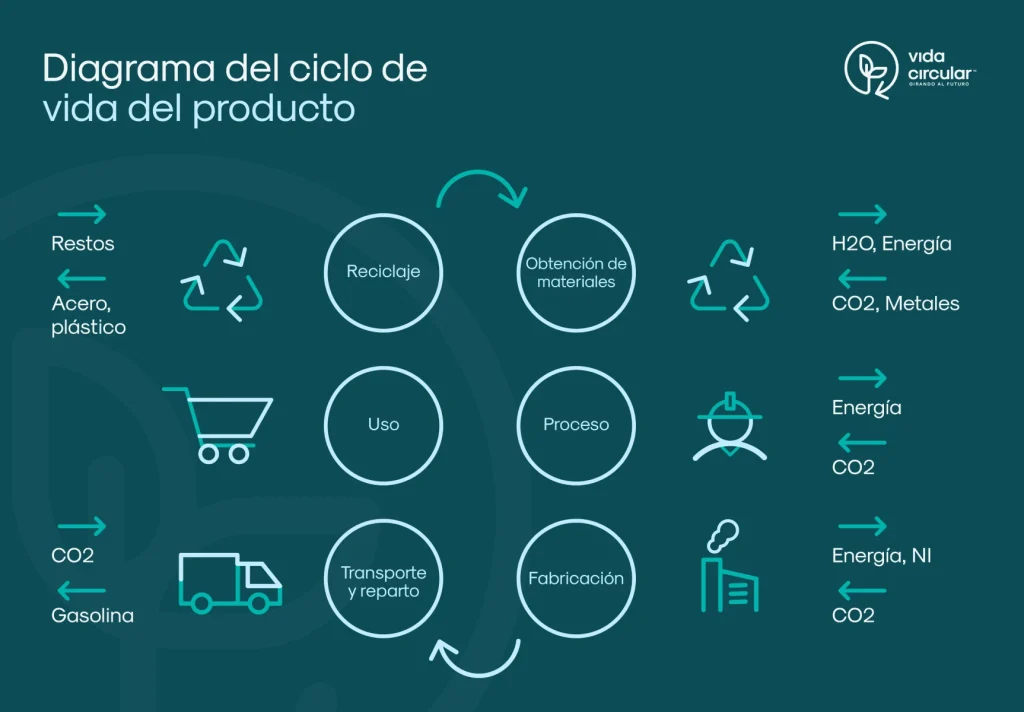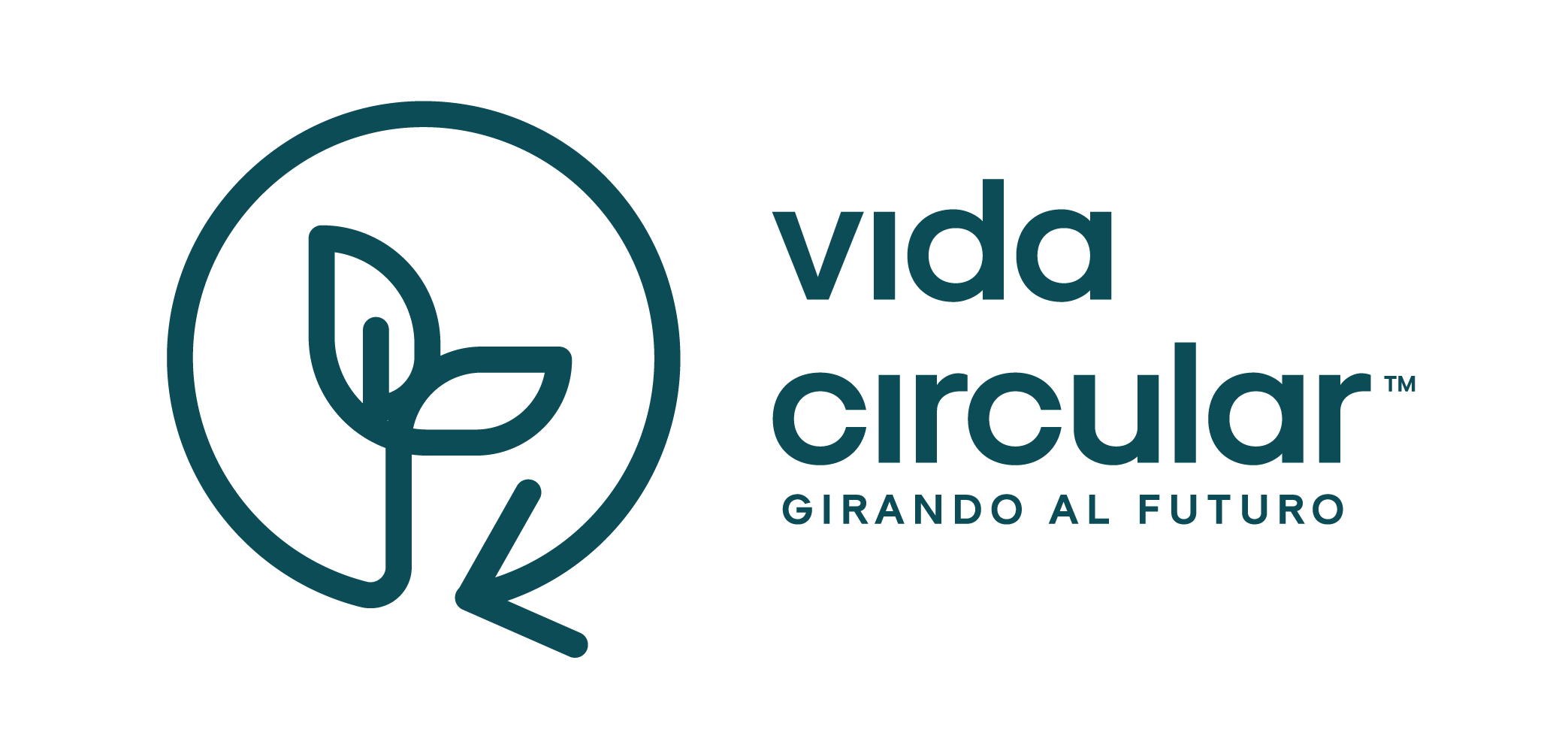
Life Cycle Assessment (LCA): A key tool for environmental sustainability
What is Life Cycle Analysis?
Life Cycle Assessment is a systematic analysis of the environmental impact throughout the entire life cycle of a product, material, process or other measurable activity.
In other words, it is a process to evaluate, as objectively as possible, the environmental burdens associated with a product, process or activity by identifying and quantifying the use of matter and energy and discharges to the environment; to determine the impact that such resource use and discharges have on the environment; and to evaluate and implement environmental improvement strategies.
Thanks to this analysis, it is possible to determine strategies for improving and minimizing environmental impacts at all stages of the life cycle of a product or service. In this way, the life cycle analysis of a productof a product, service or activity (LCA) facilitates the evaluation of the environmental impact of a product, service or activity. environmental impact that each one generates during its entire life cycle.
That is, from the procurement of the raw material and its transportation, to the production of the product, its distribution and use. It can even go up to when it is reused, recycled or discarded.
Life Cycle Assessment Stages
Life cycle analysis (LCA) breaks down the journey of a product or service from its conception to its final disposal into clearly defined stages. Each of these stages plays a critical role in determining the total environmental impact. In the following, we will explore these stages proposed by Gonçalves:
1. Acquisition of raw materials: Stage of activities of direct action on the natural environment. It includes non-renewable material, water and biomass collection.
2. Process and manufacturing: Covers all activities necessary to convert raw materials and energy into the desired product.
3. Distribution and transportation: Refers to the transfer of products from the point of manufacture to the final consumer, including intermediate storage.
4. Use, reuse and maintenance: Use of the finished product throughout its service life, (some products cannot be used directly, they need actions, e.g. frozen food). This phase also considers the internal reuse of materials, e.g. reuse of glass bottles in a house.
5. Removal and treatment: In this step is key the possibility of reuse or recycling of materials (material recovery), in some cases it is possible to close the life cycles by inserting the removed material at a point in the manufacture of a new material.
6. Disposal, final destination: When the material is not valorized, its life cycle ends. At this point, the way in which the material is deposited in the natural environment is evaluated. When depositing a material, its physical and chemical characteristics can be taken into account and controlled, for example, and measures can be taken to avoid negative effects of the discarded material on the environment.
By examining each stage of the life cycle through Life Cycle Assessment (LCA), we gain an in-depth understanding of the environmental impacts of our products and services. This knowledge empowers us to make informed and responsible decisions that favor sustainability. Implementing improvements at any stage of the cycle can lead to significant reductions in our ecological footprint, demonstrating that every step in the process counts towards a greener, more sustainable future.

Importance of Life Cycle Analysis
The implementation of Life Cycle Assessment (LCA) in the design, development and evaluation of products and services has become a cornerstone for organizations committed to environmental sustainability. This systematic methodology allows a panoramic view of the environmental impacts associated with a product or service throughout its life cycle, from the extraction of raw materials to its final disposal. In doing so, LCA uncovers opportunities for improvement that might otherwise remain hidden, including:
Promoting environmental protection
Life Cycle Assessment is essential to identify and quantify greenhouse gas emissions, natural resource use and waste generation, enabling companies and policy makers to develop strategies that minimize these impacts. By considering each phase of the life cycle, a comprehensive assessment of the environmental footprint is ensured, promoting practices that protect ecosystems and biodiversity.
Operational efficiency and cost reduction
Beyond its environmental benefit, Life Cycle Assessment can reveal areas of operational inefficiency that, once addressed, result in significant cost reductions. For example, optimizing material use and improving energy efficiency not only decreases environmental impact, but also reduces operating expenses. Companies can discover more sustainable material alternatives or cleaner technologies that, in the long run, offer a return on investment through resource and energy savings.
Alignment of economic and environmental objectives
One of the greatest advantages of Life Cycle Assessment is its ability to align economic and environmental objectives, demonstrating that sustainable growth is possible. By integrating sustainability considerations from the design phase, companies not only respond to growing regulatory and consumer demands for greener products, but also position themselves as leaders in innovation and corporate responsibility. This alignment promotes a resilient business model, capable of adapting to a market that is constantly evolving towards sustainability.
Life Cycle Assessment is not just a tool for environmental assessment; it is an essential instrument for strategic decision making that benefits both the planet and the bottom line. Its extensive application is crucial to unlocking the potential for environmental improvements at all stages of the life cycle of products and services, offering a path to comprehensive sustainability and long-term business success.

Concluding on Life Cycle Assessment
Life Cycle Assessment rises above its function as a mere environmental assessment tool, becoming a powerful call to action for businesses, consumers and policy makers committed to sustainability. By integrating Life Cycle Assessment into their operations and consumption decisions, all actors in society can make a significant contribution to minimizing negative impacts on the environment, while promoting more responsible and ethical economic practices.
The adoption of Life Cycle Analysis reflects a commitment to change and innovation, urging a rethinking of how products are designed, produced, consumed and disposed of. This holistic approach identifies opportunities for improvement not only at the individual product level, but also in large-scale production and consumption systems, encouraging the transition to more circular and regenerative business models.
By following the guidelines that this tool proposes, it opens up the possibility of effectively balancing economic growth with environmental conservation. This balance is crucial in a world where resources are finite and pressure on ecosystems is increasing. Implementing sustainable practices becomes, then, not only an ethical imperative, but also an intelligent long-term strategy to ensure economic and environmental viability.
A future where economic development and environmental protection go hand in hand is possible. This path to sustainability involves close collaboration between industries and consumers united by the common goal of reducing our environmental footprint. Life Cycle Assessment, as a guide for this collaboration, highlights the interconnectedness of our actions and the profound impact they can have on the planet and the lives of future generations.
Ultimately, embracing Life Cycle Analysis is a commitment to a legacy of prosperity, resilience and responsibility. It is an invitation to actively participate in the creation of a greener and fairer future, where progress is not only measured in terms of economic benefits, but also in the health of our planet and the well-being of all life forms that inhabit it. In this sense, Life Cycle Assessment is not just a tool, but a compass that guides us towards a truly sustainable development.




